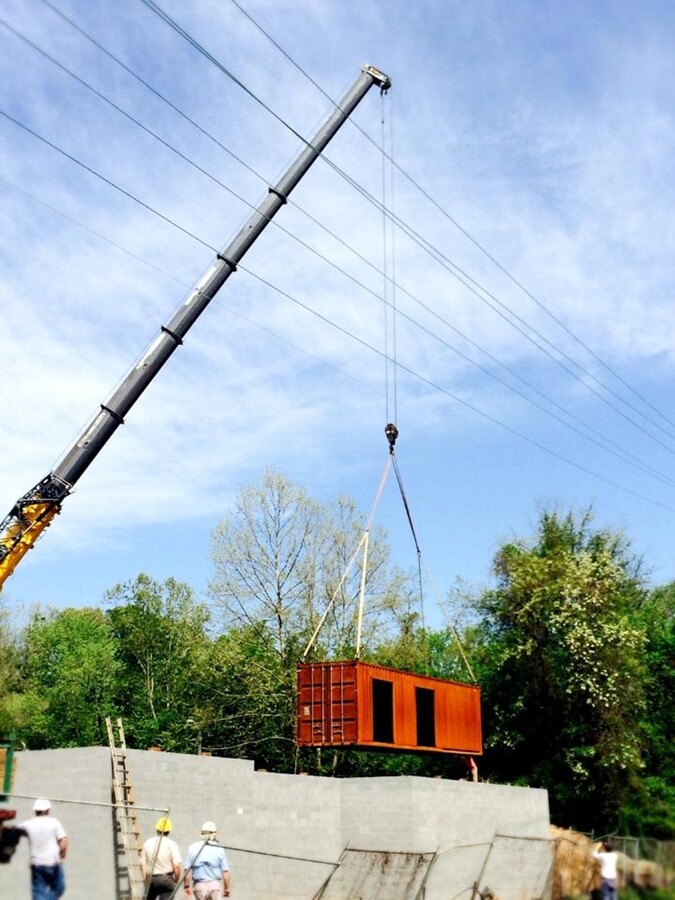A new restaurant due to open in the US is claimed to be the largest in the country to be built using shipping containers. The Smoky Park Supper Club in Asheville, North Carolina, is constructed from 19 containers and was built by shipping container construction firm SG Blocks.
The Smoky Park Supper Club sits on a 1.8 acre (7,284 sq m) site on the side of the French Broad River, allowing customers to arrive by car, foot, bike or boat. The site was formerly brownfield and so required a thorough clean-up operation prior to the start of construction.
SG BLocks vice president of sales and business development David Cross tells Gizmag that it takes 8,000 kWh of energy to melt down used shipping containers and only 500 kWh to reuse them for construction. He estimates that, in using shipping containers, the construction of the Smoky Park Supper Club saved a potential 142,500 kWh of energy.
In order to reuse the containers, they must first be stripped of any exterior coatings. They can then have fresh coatings applied and be prepared for installation.

It took three days to install the 19 containers used to construct the Smoky Park Supper Club. Cross says the build could have been completed in one-and-a-half days, but that it was decided to take more time and progress methodically. In addition, the extra time taken helped to minimize the increase in traffic caused by the transportation of the containers.
The project, including initial contact and design, started in 2011, with the build being completed in May last year. The restaurant is due to open this (northern) spring, with the time since installation having been taken to complete the post-build work.
The video below is a timelapse of the Smoky Park Supper Club being built.
Sources: Smoky Park Supper Club, SG Blocks







